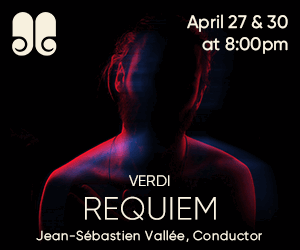Review
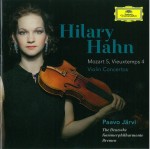 The wonderful Hilary Hahn has a new CD that features two concertos that have a strong personal resonance for her. On Violin Concertos: Mozart 5 Vieuxtemps 4 (Deutsche Grammophon 4793956) Hahn plays two concertos that she first learned at the age of 10. The Vieuxtemps Concerto No.4 in D Minor Op.31 was the last work she learned with Klara Berkovich, her first main teacher, and Mozart’s Concerto No.5 in A Major K219 was the first work she learned with Jascha Brodsky when she moved to the Curtis Institute of Music later the same year.
The wonderful Hilary Hahn has a new CD that features two concertos that have a strong personal resonance for her. On Violin Concertos: Mozart 5 Vieuxtemps 4 (Deutsche Grammophon 4793956) Hahn plays two concertos that she first learned at the age of 10. The Vieuxtemps Concerto No.4 in D Minor Op.31 was the last work she learned with Klara Berkovich, her first main teacher, and Mozart’s Concerto No.5 in A Major K219 was the first work she learned with Jascha Brodsky when she moved to the Curtis Institute of Music later the same year.
Hahn notes that both works have been pillars of her performance repertoire ever since, and her familiarity with and deep understanding of these works is evident throughout the CD, the Mozart in particular benefitting from her usual crystal-clear tone and her immaculate and intelligent phrasing.
The Vieuxtemps Concerto No.4 has always lived in the shadow of his Concerto No.5 in A Minor, and will probably be new to most listeners; I don’t recall having heard it before. It’s somewhat unusual in that it has four movements instead of the customary three, although Vieuxtemps did indicate that the Scherzo third movement could be omitted in performance. You can perhaps understand why: the Scherzo has a very strong ending that sounds for all the world like the end of the concerto,while the Andante opening to the actual Finale feels more like the start of a completely new work. Still, it’s a fine concerto, with a particularly effective slow movement, and it’s difficult to imagine it receiving a better performance.
Hahn is accompanied by the Deutsche Kammerphilharmonie Bremen under Paavo Järvi, whom she describes as “musical partners for a long time.” It certainly shows in these terrific performances.
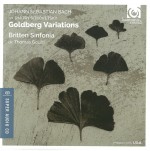 The Bach Goldberg Variations have been the subject of many varied instrumental arrangements over the years, with one of the best being the transcription for string trio that the violinist Dmitry Sitkovetsky made in 1985 to mark the 300th anniversary of the composer’s birth. The string trio version serves the predominantly three-part keyboard writing particularly well, and Sitkovetsky later expanded this into a transcription for string orchestra; it is this version that is given a beautiful performance by England’s Britten Sinfonia, directed by their associate leader Thomas Gould, on a new harmonia mundi Super Audio CD (HMU 807633).
The Bach Goldberg Variations have been the subject of many varied instrumental arrangements over the years, with one of the best being the transcription for string trio that the violinist Dmitry Sitkovetsky made in 1985 to mark the 300th anniversary of the composer’s birth. The string trio version serves the predominantly three-part keyboard writing particularly well, and Sitkovetsky later expanded this into a transcription for string orchestra; it is this version that is given a beautiful performance by England’s Britten Sinfonia, directed by their associate leader Thomas Gould, on a new harmonia mundi Super Audio CD (HMU 807633).
The larger forces involved (the string strength is 6-5-4-3-2) don’t ever seem to present a problem with regard to the intimacy and nature of the music, partly because it’s not a case of everybody playing all the time; there is a judicial use of solo instruments, especially in the really tricky fast passages, and the playing is always beautifully measured.
The CD jewel case quotes a Guardian newspaper review of a concert performance of this version of the Variations by the Britten Sinfonia, calling it “an astonishing performance that preserved the delicate contrapuntal intricacy of Bach’s original.” The same can confidently be said of this CD.
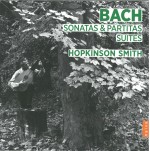 There are more Bach transcriptions available in a 4 CD box set of the works for solo violin and solo cello, Sonatas & Partitas, Suites, this time in transcriptions for lute and theorbo by the American lutenist Hopkinson Smith (naïve 8 22186 08939 2). The set is a reissue in box form of Smith’s previous CDs; the Violin Sonatas & Partitas were recorded in 1999 and the Cello Suites in 1980, 1992 and 2012. A theorbo is used for the first three cello suites and a 13-course baroque lute for the violin works and the cello suites four to six.
There are more Bach transcriptions available in a 4 CD box set of the works for solo violin and solo cello, Sonatas & Partitas, Suites, this time in transcriptions for lute and theorbo by the American lutenist Hopkinson Smith (naïve 8 22186 08939 2). The set is a reissue in box form of Smith’s previous CDs; the Violin Sonatas & Partitas were recorded in 1999 and the Cello Suites in 1980, 1992 and 2012. A theorbo is used for the first three cello suites and a 13-course baroque lute for the violin works and the cello suites four to six.
The two individual cello CDs were reviewed in this column in April 2013, but these performances of the violin works are new to me. They are naturally in much the same style as the cello transcriptions, with a good deal of filling-in of harmony – although an underpinning of the implied harmonic structure might be a more accurate description – and a softer sound and smaller dynamic range than the original. Multiple stopping is much smoother, making it easier to hold and bring out the melodic line. The English composer and guitarist John Duarte, in his July 2000 Gramophone magazine review, called these performances “arguably the best you can buy of these works – on any instrument.”
In the expansive and detailed booklet notes, Smith makes a strong case for transcribing this music, pointing out that Bach himself played the violin works on the harpsichord with full accompaniment. These CD performances, however, make the strongest case you could ever need. It’s a marvellous set.
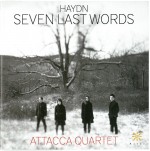 Another work presented in a transcribed version on a new CD is Haydn’s Seven Last Words of Christ on the Cross, performed by the Attacca Quartet in a new arrangement by their cellist Andrew Yee (Azica ACD-71299). Although this is a work that is now most commonly performed by a string quartet it does exist in several versions, and Yee has chosen a new and creative approach with his arrangement.
Another work presented in a transcribed version on a new CD is Haydn’s Seven Last Words of Christ on the Cross, performed by the Attacca Quartet in a new arrangement by their cellist Andrew Yee (Azica ACD-71299). Although this is a work that is now most commonly performed by a string quartet it does exist in several versions, and Yee has chosen a new and creative approach with his arrangement.
Haydn wrote the work in 1786 on a commission from Cádiz Cathedral for an orchestral setting to be used in their Good Friday service, in which the reading of – and short sermon on – each of the seven quotes from scripture was followed by a musical interlude appropriate in expression to the preceding reflections. The work proved to be extremely popular, and Haydn clearly considered it valid outside of the liturgical framework, the publication of the orchestral version in 1787 being accompanied by both a Haydn-approved piano four-hand reduction and a string quartet version. The latter (which may not have been entirely Haydn’s work) essentially followed the violin, viola and cello parts from the orchestral version and ignored the wind parts. Haydn apparently wasn’t too happy with it, and although it probably wasn’t intended for anything other than amateur home performance it is the version we usually hear today.
In 1795 Haydn heard a performance of the work in a German choral version by Joseph Friebert, and was sufficiently impressed to make his own oratorio arrangement for soloists, choir and orchestra, a version which incorporated significant changes to the original work. All but one of the seven sections were preceded by a chorale setting of the relevant scripture passage, and the work was split into two sections, with a new introduction to the second half.
For this Attacca Quartet arrangement, Yee studied the original orchestral, string quartet and oratorio settings, with many of the editorial decisions based on the oratorio version; indeed, the jewel case blurb calls this recording “a new arrangement of the oratorio version.” It’s certainly extremely effective, and is beautifully played by the quartet, with a sensitive and spare use of vibrato and a clear empathy for the nature and meaning of the music. It’s easily the most satisfying string version of the work that I’ve heard.
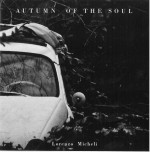 Autumn of the Soul is a charming new CD by the Italian guitarist Lorenzo Micheli featuring works by Mario Castelnuovo-Tedesco, Vicente Asencio, Angelo Gilardino, Alexandre Tansman and Pierre de Bréville (Contrastes Records CR9201409).
Autumn of the Soul is a charming new CD by the Italian guitarist Lorenzo Micheli featuring works by Mario Castelnuovo-Tedesco, Vicente Asencio, Angelo Gilardino, Alexandre Tansman and Pierre de Bréville (Contrastes Records CR9201409).
Andrés Segovia is not directly represented on the CD, but his influence links all the pieces together. Tansman and de Bréville were two of the composers who wrote works for Segovia following his groundbreaking 1924 solo guitar recital in Paris. Tansman, whose association with Segovia lasted for over 50 years, is represented by two works: the three-movement Hommage à Chopin and the Variations sur un thème de Scriabine. The French composer de Bréville’s short untitled composition from 1926 was never performed by Segovia, and remained unknown until the discovery of the manuscript in the Segovia archives in 2001.Gilardino was one of the two editors who published the work under the title Fantasia. Gilardino’s own Canzone notturna is included here. Asencio’s Suite mistica consists of three short movements inspired by the New Testament; the work was dedicated to Segovia, who suggested the title.
The CD opens and closes with selected movements from Castelnuovo-Tedesco’s Platero y yo, a work inspired by the 1914 book of children’s prose by the Andalusian poet Juan Ramón Jiménez that tells the story of the donkey Platero and his owner. It was written in 1960, coincidentally the same year a similar suite with the same name was composed by Eduardo Sáinz de la Maza, and was originally meant to be played in conjunction with a reading of the poems. Segovia intended to record it this way, but only managed ten of the pieces without narration. Castelnuovo-Tedesco’s work perhaps doesn’t have quite the Spanish warmth of the Maza version, but the eight movements here are quite delightful. Micheli’s playing is clean and accurate throughout a quite challenging selection of works.
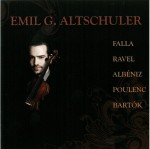 The young American violinist Emil Altschuler has a terrific pedigree, having studied with the legendary Dorothy DeLay at Juilliard and with Erick Friedman at the Yale School of Music. His self-titled and independently released CD (emilaltschuler.com) – apparently his second solo album – features works by Falla, Ravel, Albèniz, Poulenc and Bartók, with pianist Keunyoung Sun as accompanist.
The young American violinist Emil Altschuler has a terrific pedigree, having studied with the legendary Dorothy DeLay at Juilliard and with Erick Friedman at the Yale School of Music. His self-titled and independently released CD (emilaltschuler.com) – apparently his second solo album – features works by Falla, Ravel, Albèniz, Poulenc and Bartók, with pianist Keunyoung Sun as accompanist.
There’s a decidedly old-style feel to Altschuler’s playing, with the almost constant fast vibrato and the bright, slightly nasal tone very reminiscent of Heifetz. His website says that he plays with gut strings and without a shoulder rest, and notes that his sound is indeed reminiscent of old school masters such as his former teacher Friedman, and Heifetz and Kreisler. Friedman was in turn a student of Heifetz, so the link is a valid one.
There is no booklet with the CD, just a single slip of paper in the jewel case front flap, so there is a complete lack of details regarding the recordings; the program, however, is apparently one which Altschuler has been touring for several years. Falla is represented by the Siete canciones populares Españolas and the Danse Espagnol from La Vide Breve; Ravel by the Pièce en forme de Habanera and the Tzigane; and Albéniz by the Tango Op.165 No.2. Poulenc’s Violin Sonata Op.119, written in 1942-43, seems to be a bit out of place in a predominantly Spanish program, but a passionate performance proves that it’s a terrific work which really should be heard more often. Bartók’s Romanian Folk Dances are listed as bonus tracks – possibly because they were not part of Altschuler’s regular recital program – and provide an energetic end to the CD.
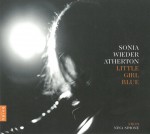 I originally knew Nina Simone only from her 1960s hit I Put a Spell on You, and then later as a jazz singer with a highly distinctive voice and style, but Little Girl Blue, the new CD from cellist Sonia Wieder-Atherton (naïve V 5376), shows how little I actually knew about the range of this artist’s work. Pianist Bruno Fontaine and percussionist Laurent Kraif join the cellist in a program, sub-titled From Nina Simone, that explores Simone’s legacy – “her repertory, her arrangements, her harmonic universe and her story too,” says Wieder-Atherton in the sparse booklet notes, although the significance of one or two of the tracks isn’t made clear.
I originally knew Nina Simone only from her 1960s hit I Put a Spell on You, and then later as a jazz singer with a highly distinctive voice and style, but Little Girl Blue, the new CD from cellist Sonia Wieder-Atherton (naïve V 5376), shows how little I actually knew about the range of this artist’s work. Pianist Bruno Fontaine and percussionist Laurent Kraif join the cellist in a program, sub-titled From Nina Simone, that explores Simone’s legacy – “her repertory, her arrangements, her harmonic universe and her story too,” says Wieder-Atherton in the sparse booklet notes, although the significance of one or two of the tracks isn’t made clear.
Simone was a classically trained pianist who won a scholarship to the Juilliard School of Music (she left after running out of money) and was then denied admission to the Curtis Institute in Philadelphia, a rejection she always believed to be racially motivated. She was also an accomplished jazz pianist. Little Girl Blue was the title of Simone’s debut album in 1958, and the Rodgers & Hart song is presented here (with a nod to Simone’s own interpolation of Good King Wenceslas in the number) along with four compositions by Simone and a selection of songs by, among others, Duke Ellington, Billy Taylor, Fritz Rotter and Oscar Brown Jr., and two classical works: the Brahms setting of the Bach choral prelude Schmücke dich, o liebe seele and the Andante middle movement from Rachmaninov’s Cello Sonata in G Minor.
The mood throughout the CD is predominantly quiet and introspective, but it is full of lovely moments. The tracks with just piano accompaniment fare much better than some of those with percussion – bells and clusters, hand pans, water drum, grain basket and body percussion (including popping the finger from the mouth) for example – which sometimes seems to detract from the music rather than add to it. Wieder-Atherton’s style in the ballads is quite affecting, and there is some lovely playing from Fontaine, particularly in Fritz Rotter’s That’s All I Want From You, the title track and the two classical items, neither of which sounds the least bit out of place in this setting. Indeed, Simone’s own composition Return Home, the final track on the CD, ends with a whimsical quote from Bach’s Toccata and Fugue in D Minor.



